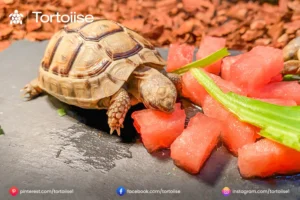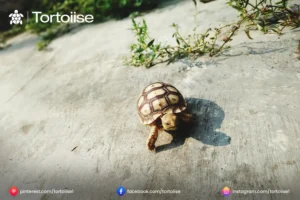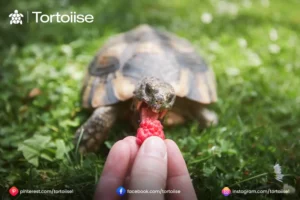How often to feed sulcata Tortoise
How Frequently to Take Care of a Sulcata Tortoise
An Extensive Aideth sulcata tortoise, otherwise called the African spurred tortoise, is a striking reptile local to the parched districts of the Sahel, extending across nations like Chad, Sudan, and Ethiopia.
As the third-largest tortoise species on the planet, the sulcate tortoise requires an eating regimen that reflects their normal environment to guarantee ideal well-being and life span. One of the most widely recognized inquiries among sulcata proprietors.
How frequently would it be a good idea for them to be taken care of complexities of sulcata tortoise care of a sulcata tortoise, including recurrence, dietary parts, and extraordinary contemplations. Grasping the Regular

Eating Routine of Sulcata Tortoise In
In the wild, sulcata tortoises consume dry grasses, stringy plants, and periodic succulents. Their common habitat offers negligible rich vegetation, which has molded their capacity to blossom with a high-fiber, low-protein, low-fat eating regimen.
This diet is significant to keep up with their well-being in imprisonment, as it upholds appropriate nutrition, shell development, and, in general, well-being. Factors Affecting Taking Care of Recurrence few variables impact how frequently a sulcata tortoise ought to be taken care of. Adolescent tortoises have higher nutritional needs than adults and require more frequent feedings.
Size
A bigger tortoise might devour more food at a time, possibly decreasing the requirement for incessant feasts.
Action Level
A dynamic tortoise might require more energy and, along these lines, more food. Season: Tortoises might eat less during colder months when their digestion dials back.
Taking care of recurrence in view, old enough (0-6 months) Hatchlings require day-to-day care to help their fast development and advancement. Offer new food consistently, guaranteeing it is finely sliced for simple utilization.
The eating regimen ought to comprise principally of grasses, mixed greens, and a modest quantity of vegetables. Adolescents (half a year – 5 years) Adolescent sulcata tortoise ought to likewise be taken care of day to day, yet their parts can bit by bit increment as they develop. Guarantee that their eating regimen stays high in fiber and low in protein. You can present a more extensive assortment of greens and plants during this stage. Grown-ups (5+ years) Grown-up sulcate can be taken care of each and every other day or even 3-4 times each week, contingent upon their size, movement level, and well-being.
Their stomach-related frameworks are proficient at separating supplements from sinewy food sources, so less frequent feedings are adequate. Nonetheless, it means quite a bit to screen their weight and general condition to guarantee they are getting sufficient sustenance.

How to Take Care of a Sulcata Tortoise
To keep a fair eating regimen, giving an assortment of food items that resemble their regular diet is fundamental. The following is a breakdown of reasonable dietary parts.
1. Grasses and Feed (75-80%) Grasses and feed ought to frame the greater part of a sulfate’s diet. Timothy roughage, Bermuda grass, plantation grass, and hay feed are great decisions. These give the essential fiber for appropriate processing and shell improvement.
2. Salad Greens (15-20%) Offer different salad greens, for example, Collard greens, Mustard greens, Dandelion greens, Endive, Escarole, Turnip Greens. Try not to take care of spinach and kale in enormous amounts because of their high oxalate content, which can tie calcium and lead to insufficiencies.
3. Vegetables (5-10%) While not a significant part of their eating routine, vegetables can mix it up. Reasonable choices include Squash, Zucchini, Ringer peppers, Carrots (with some restraint)
4. Natural products (intermittent treat) Natural products ought to be offered sparingly, as their high sugar content can upset the digestive system. Safe organic products include Berries, Papaya Melon. Limit organic product admission to something like one time per week.
5. Supplements Calcium is indispensable for shell and bone health. Sprinkle calcium powder on their food 2-3 times each week. In the event that your turtle doesn’t have standard openness to daylight, utilize an enhancement with vitamin D3. Keep away from over-supplementation, as it can prompt medical problems. Hydration and Splashing, even though sulcata turtles come from bone-dry districts, hydration is fundamental. Give spotless, new water every day in a shallow dish that is simple for the tortoise to get to. Hatchlings and adolescents benefit from ordinary drenching (2-3 times each week) in tepid water to forestall lack of hydration and support solid processing.
Normal Taking Care of Missteps Overloading
Overloading can prompt heftiness and pyramiding (unusual shell development). Screen segment measures and keeps a taking care of timetable. Taking care of high-protein food sources: Stay away from canine food, feline food, or any creature-based proteins, as these can harm their kidneys. Offering Improper Food Sources: Avoid harmful plants like azaleas, rhubarb, and oleander. Likewise, keep away from handled food sources and things high in sugar or fat. Ignoring Calcium Needs: An absence of calcium can bring about metabolic bone disease (MBD), a difficult condition affecting the shell and joints. Occasional Contemplations Sulcata tortoise
Might show different dietary patterns depending on the season
Summer
Expanded action levels might prompt higher food utilization. Give a lot of new greens and grasses. Fall and
Winter
Action levels might diminish, especially in cooler environments, and their hunger might decrease. Change taking care of recurrence as needs be. Observing Your Tortoise’s Well-being. Consistently notice your sulcata tortoise for indications of well-being or pain. Marks of legitimate sustenance include.
A smooth, firm shell without pyramiding Brilliant
Clear eyes. Dynamic way of behaving on the other hand, indications of unfortunate sustenance or medical problems include Delicate or lopsided shell development, Dormancy Weight reduction on the off chance If you notice any unsettling side effects, consult a veterinarian with mastery in reptiles. Unique Contemplations for Sulcata Tortoise in Bondage Outside Touching Assuming you keep your sulcata outside, they might eat normally on grasses and weeds. This can lessen the requirement for supplemental care; however, guarantee their touching region is liberated from pesticides and harmful plants.
Indoor Tortoise For a tortoise kept inside, it is fundamental to give a UVB light source to simulate normal daylight. This supports vitamin D3 amalgamation and calcium ingestion, which are basic for shell wellbeing.

End
Taking care of a sulcata tortoise is something beyond offering food; it requires cautious preparation and a comprehension of their regular dietary needs. By fitting their eating routine and taking care of the timetable to their age, size, and movement level, you can guarantee they lead a sound and satisfying life. Continuously focus on high-fiber, low-protein food varieties and stay away from normal taking care of missteps. With legitimate consideration and care, your sulcata tortoise can flourish for a long time, filling in as a deep-rooted buddy and a demonstration of the marvels of nature.

